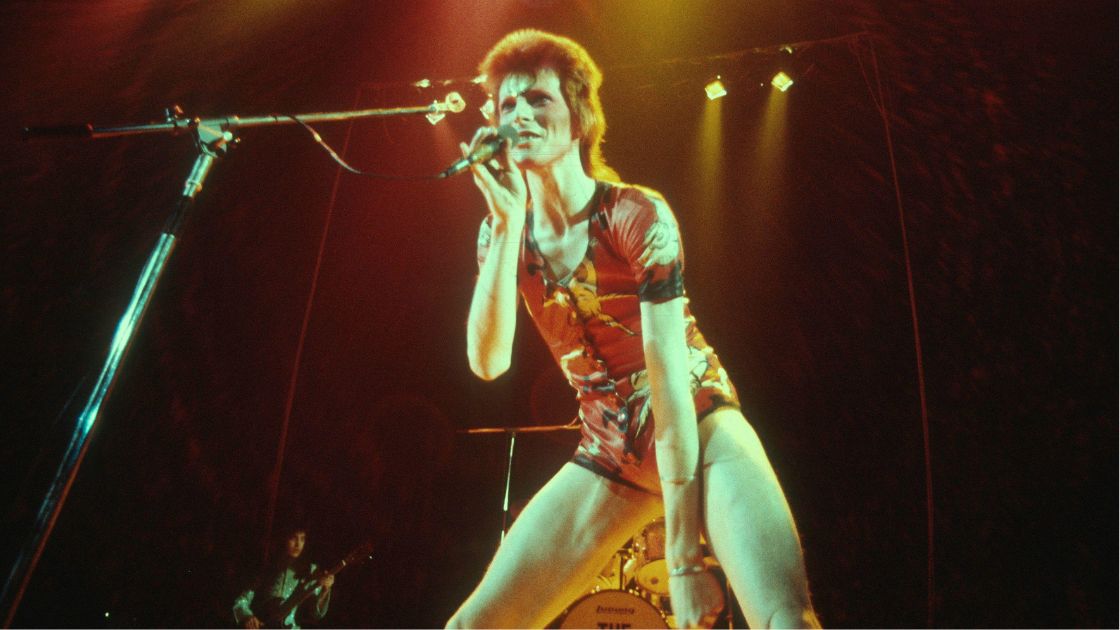David Bowie Made The Transformation as a “Rock ‘n’ Roll Star!”
Box set documents his most legendary period
Until 1972, David Robert Jones’ career was a classic case of trial and flaw. After fronting various R&B groups in the mid-1960s with no success and avoiding confusion with the Monkees’ Davy Jones, he changed his last name to Bowie and embarked on a career under his new name. Testing various musical grounds to see what worked, his early output ranged from a music hall-tinged eponymous debut album to a novelty single about a laughing gnome.
Bowie hit paydirt in 1969 with the release of “Space Oddity.” Inspired by the film 2001: A Space Odyssey and rushed to coincide with the Apollo 11 moon landing, it was a Top 5 hit. However, the folk-rock sound of his second eponymous album (often dubbed Space Oddity) bore no resemblance to the single and fell off the radar. Hard rock dominated the early 1970s, and Bowie attempted to fit in with The Man Who Sold The World. The public listened with their eyes as the album’s musical content didn’t match the androgynous sleeve design, depicting Bowie in a dress. The piano-driven art-pop stylings of its follow-up, Hunky Dory, signaled the start of Bowie’s classic era. As he sang, “Time may change me, but I can’t trace time” on the album opener “Changes,” the public didn’t know he wasn’t too far off from his next venture of reinvention.
The fictionalized character of Ziggy Stardust became the focal point of 1972’s The Rise and Fall of Ziggy Stardust and the Spiders From Mars. The album’s loose concept tells about Earth’s impending apocalypse (“Five Years”) and how a bisexual alien rockstar (“Ziggy Stardust”) descends to Earth (“Starman”) only to be killed off by his fame (“Rock ‘n’ Roll Suicide”). Bowie’s love for Gene Vincent and Japanese kabuki theatre formed the nucleus of his new alter ego. A flaming red mullet and flared space-age outfits swapped his feminine long locks and dresses. This look not only became glam rock’s singular identity and pushed boundaries for both fashion and gender norms, but it became Bowie’s most memorable persona. Cultural impact aside, The Rise and Fall of Ziggy Stardust and the Spiders From Mars is Bowie’s second best-selling album and appears on countless best albums lists.
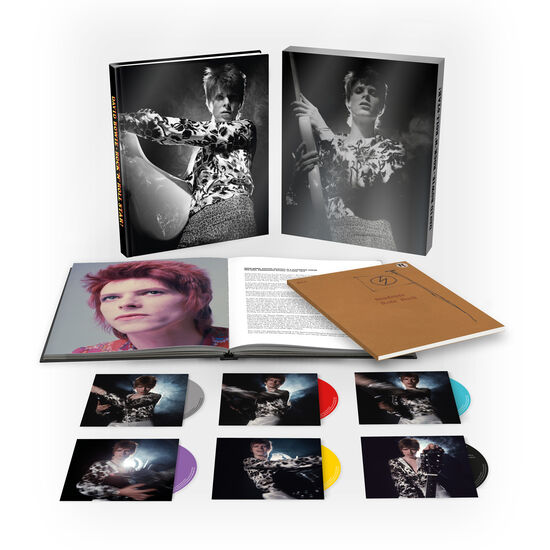
In recent years, Bowie’s estate and Parlophone/Rhino launched a series of box sets bringing together various recordings from Bowie’s early album cycles. The 5-CD Conversation Piece set in 2019 coincided with the 50th anniversary of Space Oddity by featuring countless home demos and BBC sessions. The Width of a Circle, a concise 2-CD set released two years later, focused on Bowie’s failed attempts to follow up the success of “Space Oddity” alongside other recordings from the Man Who Sold The World period. The release of Divine Symmetry the following year raised the ante of what these sets had to offer. Centered around Hunky Dory, the set features demos, BBC sessions, a soundboard tape from a Friars gig, and a plethora of both alternate and new mixes. Two years later and shy of the album’s 50th anniversary, The Rise and Fall of Ziggy Stardust and the Spiders From Mars’ immense importance in the Bowie canon is exemplified by the release of the 5-CD/1BR set, Rock ‘n’ Roll Star!
Rock ‘n’ Roll Star!, a phrase lifted from the track “Star,” presents itself in a glossy mylar outer box, a classy deluxe touch given this period’s significance in Bowie’s evolution. The meat and potatoes of the set lie in the 112-page hardcover book featuring track-by-track annotations, press clippings, tape box scans, adverts, re-published articles from the time, and photos. Co-producer Ken Scott's technical specification breakdown of each track from the Rise and Fall album is insightful, and he breaks down the alternate mixes and outtakes. Each disc is housed in wallets within the book, with individual sleeves shot by Brian Ward, whose photos grace the front of the outer box and hardbound book. Also included is a 36-page curation of Bowie’s personal notebooks, containing handwritten lyrics, artwork sketches, and potential tracklistings. The packaging of Rock ‘n Roll Star! matches identically to the size and style of curation of other sets like Conversation Piece and Divine Symmetry, classily maintaining consistency across the board. The hardbound book is a beautiful publication worth the $139.97 MSRP price alone.
Disc 1 explores the embryonic beginnings of Ziggy Stardust with songwriting demos Bowie recorded in early 1971, consisting of himself and a 12-string guitar or piano. Bowie sings about his ideology that the 1970s were the start of the 21st century on “So Long 60s,” a track that bears no resemblance to when it became “Moonage Daydream.” There is an element of awe and wonder in Bowie’s colorful chord choices heard on the 2nd demo of “Starman,” with some arpeggios and slide guitar absent from the final album version. Appearing before on other box sets and deluxe editions are the Arnold Corns versions of “Moonage Daydream” and “Hang On To Yourself.” Considered a dry run of the Ziggy Stardust idea, these tracks would flesh out further a year later on Rise and Fall. The Haddon Hall rehearsals offer a fly-on-the-wall experience to hear Bowie and his trusted backing band of Mick Ronson, Trevor Bolder, and Woody Woodmansey (The Spiders From Mars) getting their act together.
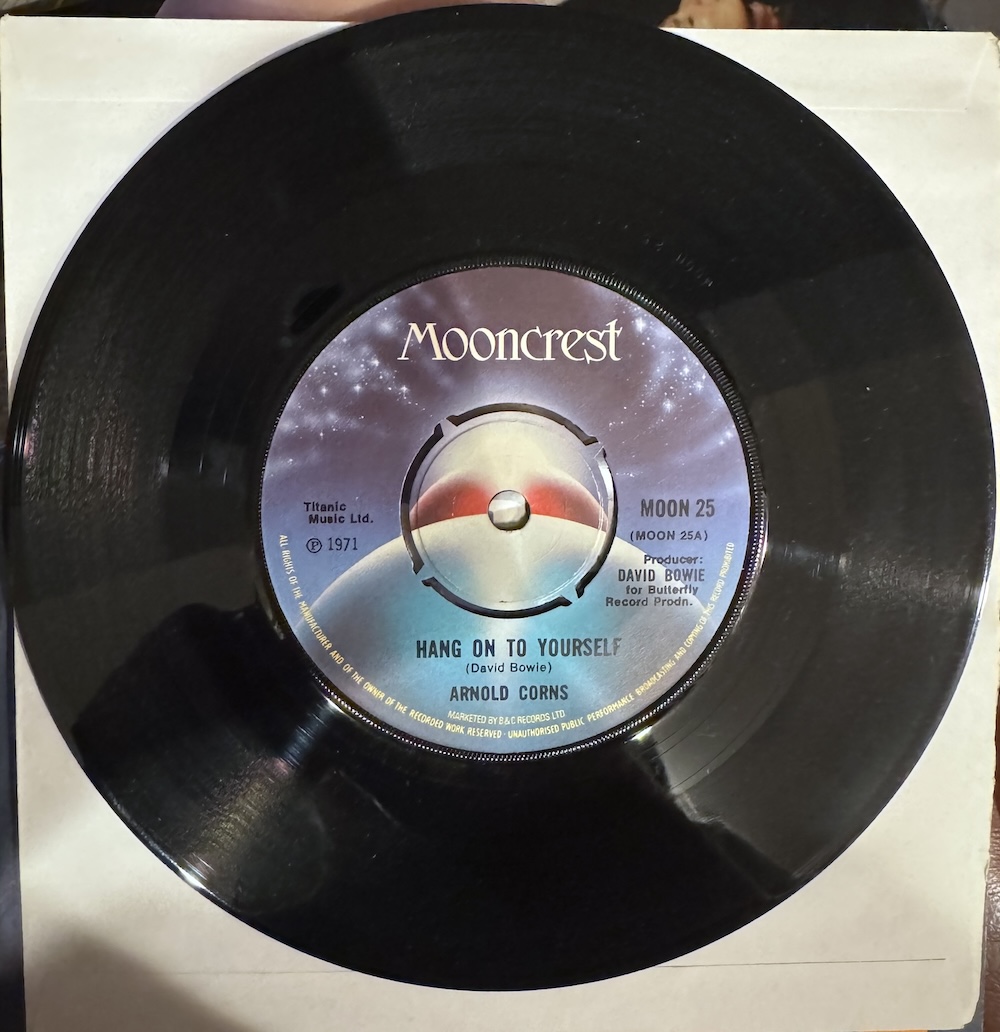 original Arnold Corns single
original Arnold Corns single
Discs 2 and 3 focus on Bowie’s appearances at the BBC from the time. He and the Spiders had a prolific streak with BBC Radio in early 1972, recording four Sounds of the 70s sessions and one for the Johnnie Walker Lunchtime Show. Broadcasted in glorious mono and mostly well preserved, these sessions are best known from the Bowie at the Beeb compilation in 2000. The session that is fresh to most ears is the one from January 11th, which only exists as an off-air source but is featured nonetheless. Outside of radio appearances, there are audio rips from Bowie’s TV appearances on Old Grey Whistle Test and Top of the Pops. Though best experienced visually on the Best of Bowie DVD or YouTube clips (screenshots of these appearances are in the hardbound book), the canned backing tracks and live vocals are still unique performances in their own right to be featured. The Top of the Pops performance of “Starman” is most significant, as it is considered the launching pad for Bowie’s stardom.
Disc 4 kicks off with some well-known Ziggy offcuts that appeared on compilations and as B-sides: Bowie’s vamping cover of Chuck Berry’s “Round and Round,” remakes of “The Supermen” and “Holy Holy,” and the underrated gem “Velvet Goldmine.” The two central singles from this period, a specially mixed version of “Starman” and the non-album track “John I’m Only Dancing,” follow suit. Rounding the disc off are the remains of the professional recording from the show at Boston’s Music Hall in October 1972 (the senior editor was at this show!).
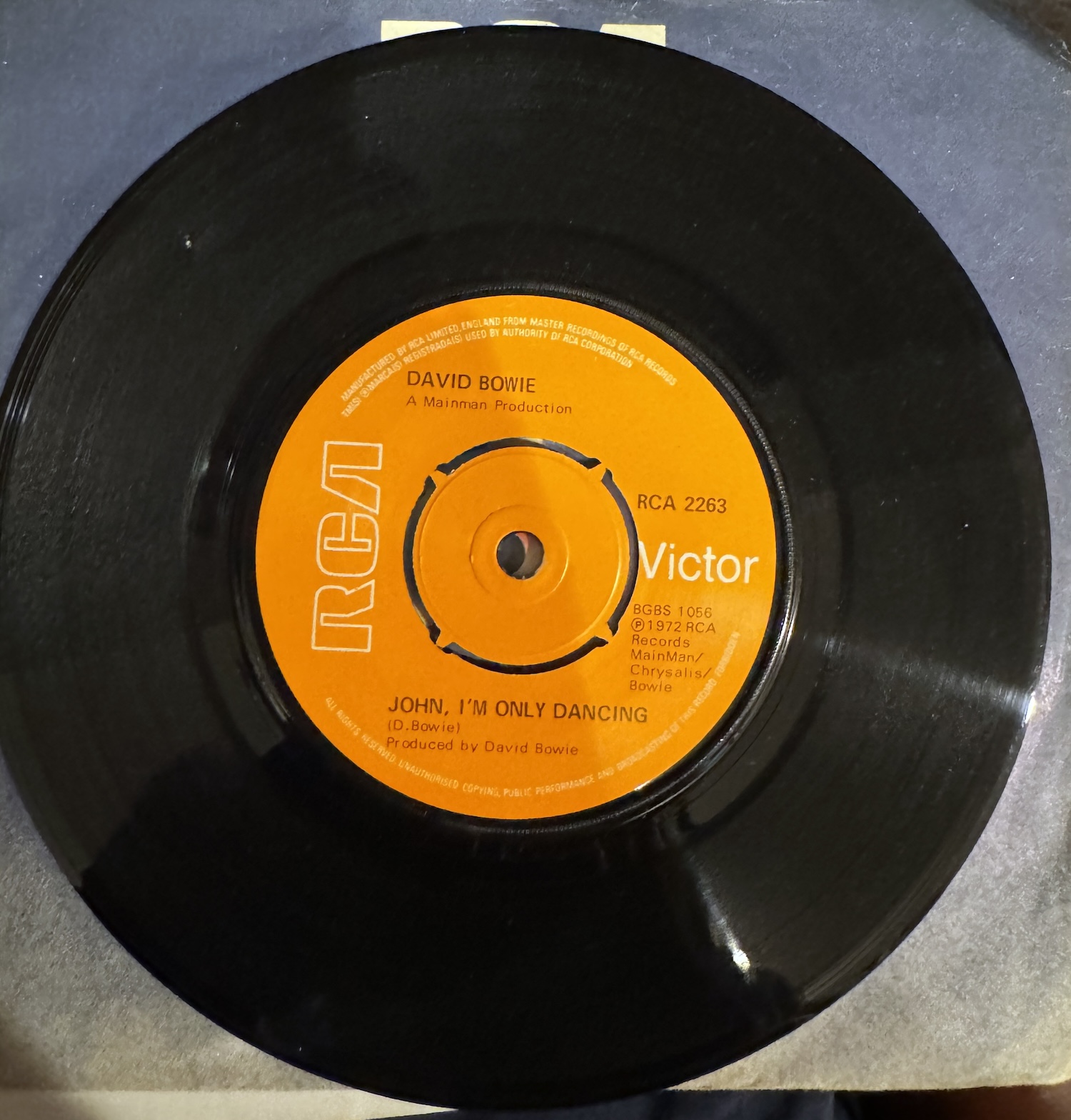 "John I'm Only Dancing" original U.K. single
"John I'm Only Dancing" original U.K. single
 Piece of giant billboard for 1972 Music Hall Ziggy appearance (editor's collection)
Piece of giant billboard for 1972 Music Hall Ziggy appearance (editor's collection)
On Disc 5, Ken Scott dusts off the multi-tracks and provides fresh mixes of outtakes and tracks that didn’t make the final album. The most revealing alternate take is “Lady Stardust,” with Bowie swapping its soaring tenor vocal for a more tame, subtle baritone delivery. The most enigmatic Ziggy outtake that never seeped into the bootleg circles was “It’s Gonna Rain Again,” a 50s-style shuffle; it finally sees the light of day. While never prone to look back artistically, Bowie tended to reuse what he did before musically. The Arnold Corns project may not have taken off as Bowie hoped for in 1971, but he saw something in the track “Looking for a Friend” to give it another crack (a rough mix of the original version is on Disc 1). It’s also now that the public hears an early rendering of “Shadow Man,” a track Bowie revisited later in his career on the Toy album. Originally appearing on the Rykodisc reissue of Rise and Fall over 30 years prior, revisiting the outtake “Sweet Head” is welcoming. The loose rendition of The Who’s “I Can’t Explain” predates the version found on Bowie’s covers album Pin Ups a year later. This disc is the true treasure trove of the box set.
Disc 6 is a BluRay containing high-resolution versions of the 2012 stereo remaster of The Rise and Fall of Ziggy Stardust and the Spiders From Mars, single mixes, and the session outtakes. Surround sound fans can rejoice with the inclusion of the album’s 5.1 mix, first released on SACD in 2003 and DVD-A in 2013, the latter only coupled with the highly reputable all-analog vinyl pressing. An exciting curio worth mentioning is the inclusion of Waiting In The Sky, the initially intended preliminary tracklist for the Rise and Fall album dating back to November 1971. First released earlier this year for Record Store Day and itching up to $80 as of writing, it holds a stark difference to what became the final album and is worth exploring.
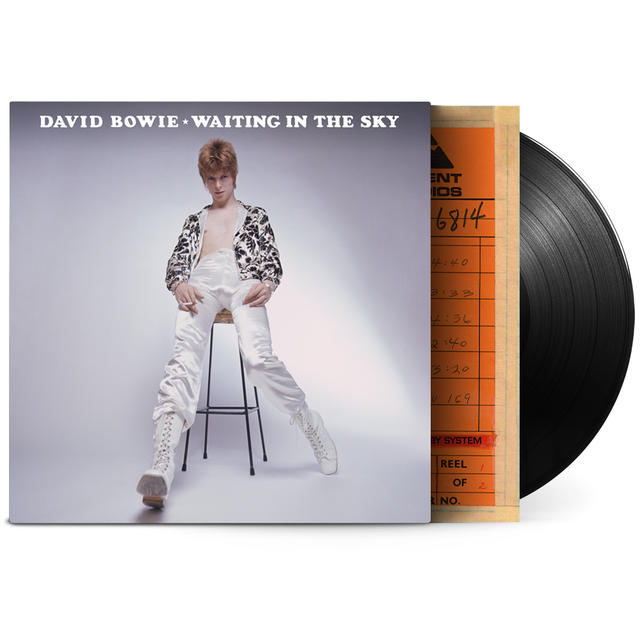 Rock ‘n’ Roll Star! isn’t a case of “scrapping the barrel” and presenting a trough of recordings with no cohesion. It tells a story and allows the listener to hear how Bowie made his ideas of a futuristic alter ego into a reality. This box set is the most comprehensive one to come so far and is sure to be highly coveted.
Rock ‘n’ Roll Star! isn’t a case of “scrapping the barrel” and presenting a trough of recordings with no cohesion. It tells a story and allows the listener to hear how Bowie made his ideas of a futuristic alter ego into a reality. This box set is the most comprehensive one to come so far and is sure to be highly coveted.
